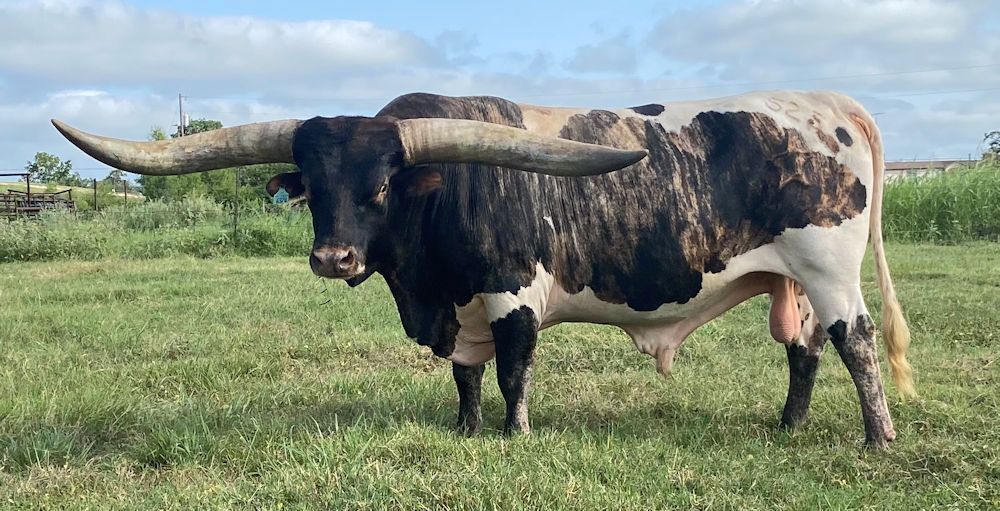Texas Longhorn Bulls: Iconic, Hardy, and Ready to Transform Your Herd

Texas Longhorn Bulls
When you think of the American West, it’s impossible not to picture the long, elegantly curved horns of a Texas Longhorn silhouetted against a sprawling prairie sky. For centuries, Texas Longhorns have been woven into the tapestry of American ranching history. Their ability to survive in harsh environments, their legendary horns, and their remarkable genetic diversity make them one of the most distinctive and sought-after cattle breeds in the country. Today, many ranchers and cattle enthusiasts are looking to improve their herds by investing in Texas Longhorn bulls. Whether you are new to the cattle business or have an established herd that needs fresh genetics, these exceptional bulls can play a pivotal role in enhancing sustainability, profitability, and overall herd health.
A Storied Legacy and Enduring Qualities
The Texas Longhorn’s ancestry can be traced to cattle brought to the Americas by Spanish explorers. Over hundreds of years, they evolved in the rugged, often unforgiving landscapes of the American Southwest. This natural selection fostered a breed capable of thriving on minimal forage, resisting pests and diseases, and weathering extreme climatic conditions. Their horns, which can span several feet tip-to-tip, are not just a magnificent display of beauty; they also helped these cattle protect themselves and navigate dense brush.
Texas Longhorn bulls retain all these remarkable traits while offering desirable qualities for modern ranching. Their genetic resilience reduces the need for costly inputs like expensive feeds and frequent veterinary interventions. They adapt to various grazing conditions and can tolerate climates ranging from scorching summers to chilly winters. This adaptability makes them an ideal choice for ranchers seeking to lower costs while maintaining—if not improving—herd performance.
Why Invest in Texas Longhorn Bulls?
When it comes to your herd’s health, productivity, and profitability, the genetics of your bulls matter immensely. By introducing Texas Longhorn bulls into your breeding program, you can transfer their hardy traits to future generations. Adding Longhorn genetics can enhance the ability of your herd to forage in less-than-ideal pasture conditions, minimize disease susceptibility, and improve overall vigor. This not only saves you time and money but also contributes to a more self-sustaining operation.
Additionally, Texas Longhorn bulls can impart balanced body conformation and unique coloration patterns to their offspring. This is a breed that boasts an incredible array of coat colors and patterns, making each calf crop an exciting visual treat. For those looking to market their cattle as breeding stock or even “heritage beef” for niche markets, the distinctiveness and historical appeal of the Texas Longhorn can add considerable value.
Assessing Quality and Selecting the Right Bulls
As with any investment, it’s crucial to ensure you’re getting top-quality Texas Longhorn bulls from reputable sources. Spend time researching breeders who maintain clear and detailed lineage records. Reputable breeders often belong to recognized associations or registries, which help maintain breed standards and track lineages. Reviewing bloodlines, horn measurements, and historical breeding performance can provide insight into a bull’s future potential.
Visiting a breeder’s ranch in person can be a wise step. Observe the conditions under which the animals are raised, ask about feeding regimens, vaccination schedules, and genetic testing. A healthy, well-managed environment typically reflects the kind of care and attention that produces high-caliber breeding bulls. Don’t hesitate to ask for references from other buyers or to request performance data, such as weaning weights or growth rates, which can help you select a bull that aligns with your operational goals.
Integration, Management, and Long-Term Benefits
Once you have selected and introduced a Texas Longhorn bull to your herd, managing this integration properly will help ensure the best possible outcomes. Provide sufficient space for the new bull to acclimate to his surroundings and future mating partners. Though Texas Longhorns are known for their calm demeanor, any change in herd structure can temporarily upset the established hierarchy. Monitor your herd closely, especially during the initial introduction period, to ensure that all animals remain healthy and secure.
Over time, you will likely notice improved hardiness and adaptability in your herd. Offspring from a Texas Longhorn bull can display a higher tolerance to environmental stressors, translating to lower input costs and fewer health concerns. This natural robustness helps position your operation more favorably in unpredictable markets or challenging conditions, ensuring a stable supply of quality cattle.
Preserving History and Embracing the Future
Investing in Texas Longhorn bulls means participating in a storied legacy that has shaped the American ranching industry. As stewards of the land and caretakers of these remarkable animals, modern ranchers have the opportunity to preserve heritage genetics while innovating for the future. The Texas Longhorn’s adaptability and resilience offer a blueprint for sustainable ranching, blending time-tested qualities with contemporary market demands.
In doing so, you not only strengthen your herd’s long-term viability but also contribute to the ongoing conservation of an iconic American breed. Adding Texas Longhorn bulls to your operation can enrich your herd’s genetic pool, improve its economic resilience, and allow you to partake in the living tapestry of American ranching tradition. This is more than an investment in cattle—it’s an investment in a legacy that will stand the test of time.

